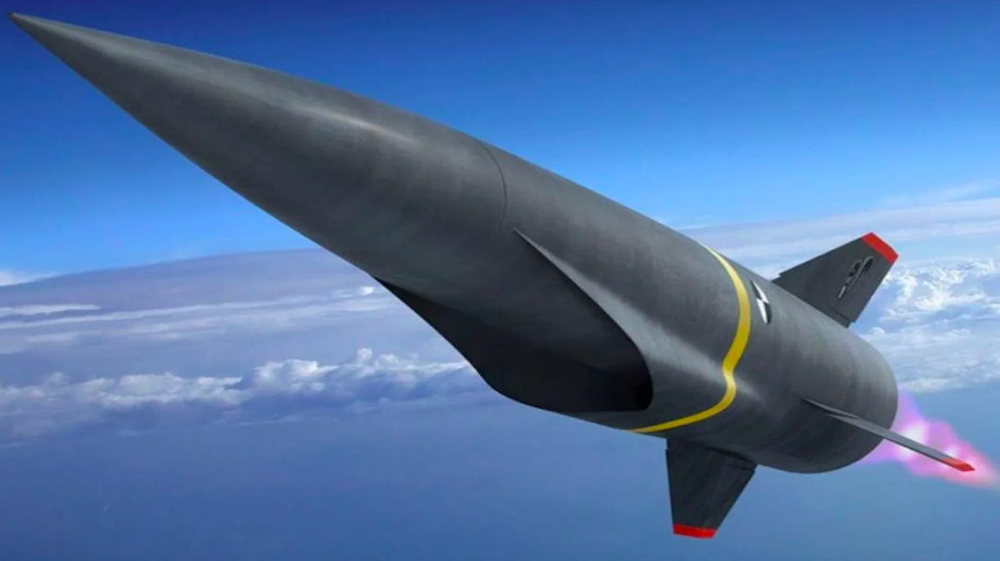
The world is witnessing a new era in warfare, fueled by the blistering speed of hypersonic weapons. These futuristic projectiles, capable of exceeding Mach 5 (over 3,800 miles per hour), are rapidly transitioning from science fiction to strategic reality. This high-stakes competition has ignited a global arms race, with the United States, China, and Russia locked in a fierce struggle to develop and deploy the next generation of hypersonic weaponry.
According to a 2022 report by the Congressional Research Service, the US Department of Defense has invested billions of dollars in hypersonic research programs. China, meanwhile, has made significant strides in recent years, with a reported hypersonic test flight in 2021 demonstrating a concerning level of technological advancement. Russia, a longtime player in hypersonics, boasts operational hypersonic glide vehicles according to their official pronouncements.
The potential consequences of this hypersonic arms race are stark. Reaction times for defending against these weapons could be drastically reduced, potentially leading to miscalculations and unintended escalations during international crises. Traditional missile defense systems, designed for slower ballistic missiles, may struggle to counter the speed and maneuverability of hypersonic weapons. As the hypersonic arms race heats up, understanding its implications and exploring avenues for arms control are critical steps towards ensuring a more stable and secure future.
The Allure of Hypersonics: Speed, Maneuverability, and Penetration
Hypersonic weapons can be broadly categorized into two types: hypersonic cruise missiles (HCMs) and hypersonic glide vehicles (HGVs). HCMs are powered by scramjets, a complex engine design that allows for sustained hypersonic flight within the atmosphere. HGVs, on the other hand, are launched from a booster rocket and then glide towards their target at hypersonic speeds. Both types offer distinct advantages over traditional ballistic missiles.
Speed: Hypersonic weapons significantly reduce the time it takes to reach a target. Traditional ballistic missiles follow a predictable, high-altitude trajectory, making them vulnerable to interception. Hypersonic weapons, however, can travel at much lower altitudes and maneuver during flight, making them more challenging to track and defend against. This compressed timeframe leaves adversaries with less time to react and potentially launch counter-strikes.
Maneuverability: Unlike ballistic missiles, HGVs possess a degree of maneuverability, allowing them to adjust their course during flight. This capability makes them even more difficult to predict and intercept, further complicating defensive strategies.
Penetration: Hypersonic weapons have the potential to bypass existing missile defense systems designed for ballistic missiles. These systems are optimized to track and shoot down high-altitude, predictable trajectories. Hypersonic weapons’ lower altitude and maneuverability could render these defenses ineffective, posing a significant challenge to current deterrence strategies.
The Players in the Race: US, China, and Russia
The United States, China, and Russia are all actively pursuing hypersonic weapons development. Each nation has its own approach and level of progress, but all three recognize the potential game-changing nature of this technology.
The United States: The US military has been researching hypersonic technology for decades. However, development has faced setbacks and delays. Currently, the US Army and Navy are both pursuing hypersonic weapon programs. The Army’s Long-Range Hypersonic Weapon (LRHW) is a land-based hypersonic glide vehicle launched from a truck-mounted system. The Navy’s Intermediate-Range Conventional Prompt Response (IRCPR) is a sea-launched hypersonic weapon designed for deployment on surface warships. Both programs are expected to reach initial operational capability in the mid-2020s.
China: China has made significant progress in hypersonic weapon development in recent years. In 2021, China reportedly conducted a test of a hypersonic glide vehicle that circumnavigated the globe before striking its target. This test raised concerns within the US intelligence community about the pace and sophistication of China’s hypersonic program. While details remain classified, China is believed to be developing several hypersonic weapon systems, including air-launched and ground-launched variants.
Russia: Russia has also actively pursued hypersonic weapons development. Russia claims to have already deployed hypersonic glide vehicles, known as Avangard, onto operational missiles. While the exact capabilities of these weapons remain unknown, Russia’s declared hypersonic advancements have further fueled the arms race.
The Looming Shadow: Potential Consequences of a Hypersonic Arms Race
The breakneck development of hypersonic weapons casts a long shadow over international security. While the technology promises tactical advantages, its strategic implications raise serious concerns:
- Hair-Trigger Tensions and Accidental War: Hypersonic weapons significantly compress reaction times. Traditional ballistic missiles follow a predictable, high-altitude arc, allowing for some window of detection and potential interception. Hypersonic weapons, however, can travel at lower altitudes and maneuver during flight, making them significantly harder to track and defend against. This compressed timeframe could lead to miscalculations and accidental escalations. Imagine a scenario where a nation misinterprets a hypersonic missile launch as an incoming attack. The pressure to respond quickly with limited information could trigger a devastating conflict based on a misunderstanding.
- Erosion of the Nuclear Deterrence Umbrella: For decades, the concept of Mutually Assured Destruction (MAD) has served as a chilling yet effective deterrent against large-scale warfare between nuclear powers. The logic is simple: a full-blown nuclear exchange would result in catastrophic losses for all sides. Hypersonic weapons, however, complicate this equation. Their rapid strike capability raises concerns about the viability of MAD. A nation might perceive a window of opportunity to launch a crippling hypersonic attack before their adversary can retaliate in kind. This could erode trust in the concept of MAD and potentially destabilize the nuclear balance of power.
- A Pandora’s Box of Proliferation: The success of any single nation’s hypersonic program could trigger a domino effect. Other countries, feeling threatened or pressured to keep pace, might be incentivized to develop their own hypersonic capabilities. This proliferation of hypersonic weapons would further complicate the global security landscape, creating new flashpoints and increasing the risk of regional conflicts.
- Verification Challenges in Arms Control: Negotiating arms control treaties for hypersonic weapons presents a unique set of hurdles. The technology is still under development, with nations constantly refining their designs and capabilities. This makes it difficult to establish clear baselines for limitations in any potential treaty. Additionally, verification of compliance with such treaties would be a complex challenge. Hypersonic weapons testing can be shrouded in secrecy, making it difficult for international inspectors to effectively monitor compliance.
The potential consequences of a hypersonic arms race are not theoretical. They represent a real and present danger to global security. Addressing these challenges requires a proactive approach, combining transparency, dialogue, and innovative arms control measures to ensure this powerful technology doesn’t usher in a new era of instability and conflict.
Seeking Paths Towards Arms Control
Transparency and Dialogue: Increased transparency and dialogue between major powers regarding their hypersonic programs and their intended use could help mitigate the risks of a hypersonic arms race in several ways.
Reduced Miscalculation: By openly discussing the capabilities and limitations of their hypersonic weapons, nations can help to dispel ambiguity and misunderstandings that could lead to miscalculations during a crisis. Knowing the nature of the threat allows for a more measured response, reducing the risk of accidental escalation.
Building Trust: Regular communication and information sharing fosters trust and confidence between adversaries. When nations understand each other’s hypersonic capabilities and intentions, they are less likely to view these weapons as a direct threat, potentially easing tensions and reducing the pressure to deploy them first.
Developing Norms of Behavior: Through dialogue, major powers can begin to establish norms of responsible behavior regarding hypersonic weapons. This might include limitations on testing, deployment locations, or targeting doctrines. While formal treaties may be difficult in the near future, establishing shared norms can serve as a preliminary step towards more comprehensive arms control agreements.
Verification Challenges: Transparency can also contribute to addressing the challenge of verifying compliance with potential future arms control treaties. Open discussions about hypersonic weapon systems and their operation could help develop verification protocols, making arms control agreements more feasible and enforceable.
Challenges of Transparency: It is important to acknowledge the challenges associated with transparency. Nations may be reluctant to reveal sensitive details about their hypersonic programs, fearing a loss of technological advantage. Additionally, verifying compliance with any agreements would require intrusive monitoring measures, which could be met with resistance.
Building a Cooperative Framework: Despite these challenges, fostering transparency and dialogue remains a crucial step in building a cooperative framework for managing hypersonic weapons development. This framework can pave the way for future arms control treaties that address the unique challenges posed by this new technology.
Beyond Dialogue: Building a Framework for Responsible Hypersonic Development
- Moratoriums on Testing or Deployment: A temporary pause on hypersonic weapons testing or deployment could offer several benefits. According to the Stockholm International Peace Research Institute (SIPRI), global military spending in 2021 reached a staggering $2.1 trillion. A moratorium, even for a limited period, could slow the pace of the arms race and free up resources that could be channeled towards more pressing global challenges like climate change or pandemic preparedness. Additionally, a moratorium could provide valuable time for negotiations, allowing countries to develop a more comprehensive framework for responsible hypersonic development. While enforcing such a moratorium might be challenging, it could serve as a critical confidence-building measure, demonstrating a collective commitment to responsible behavior in this new technological domain.
- Limits on Range or Capabilities: Negotiating limitations on the range or capabilities of hypersonic weapons offers another potential avenue for arms control. For example, agreements could restrict the development of hypersonic weapons with intercontinental ranges. Hypersonic weapons with shorter ranges would be less destabilizing, as they would primarily pose a threat to regional adversaries rather than constituting a potential tool for a surprise attack across continents. Additionally, agreements could focus on limiting the payload capacity of hypersonic weapons. Restricting them to conventional warheads, rather than nuclear payloads, could further reduce the potential for catastrophic escalation.
- International Cooperation on Missile Defense: While hypersonic weapons pose significant challenges to traditional missile defense systems, international collaboration on developing new and more effective countermeasures could be a long-term solution. Imagine a scenario where the US, China, and Russia, instead of competing in hypersonic development, collaborate on research and development of advanced missile defense systems capable of intercepting these high-speed projectiles. Such collaboration would not only enhance global security but also foster trust and cooperation between these major powers.
- Transparency and Data Sharing: Beyond general transparency measures, establishing a framework for data sharing related to hypersonic testing could be a valuable tool. Sharing data on test parameters, such as launch locations, flight paths, and re-entry trajectories, could help to alleviate concerns about potential military applications and build trust between nations.
- Verification Mechanisms: As mentioned earlier, verification of compliance with potential arms control treaties for hypersonic weapons presents a challenge. However, exploring innovative verification mechanisms, such as on-site inspections of production facilities or limitations on specific types of hypersonic testing, could be crucial for ensuring the effectiveness of any future agreements.
The road towards a more stable and secure environment regarding hypersonic weapons will undoubtedly be complex. However, by pursuing a combination of these measures, the international community can navigate this new technological frontier with greater responsibility and cooperation. By fostering transparency, engaging in constructive dialogue, and exploring innovative arms control measures, nations can chart a course towards a future where hypersonic weapons do not become a catalyst for conflict but rather a force for peace and stability.
Global Business Opportunities for Hypersonic Technology
Defence Contracting:
- Hypersonic Weapon Development: Companies specializing in aerospace engineering, materials science, and propulsion systems stand to gain significant contracts for developing hypersonic weapons for national defense programs. This includes designing hypersonic glide vehicles (HGVs), scramjet engines, and advanced guidance systems.
- Hypersonic Target Drones: The need for realistic training targets to simulate hypersonic threats creates opportunities for companies developing high-speed target drones replicating hypersonic weapon behavior for military exercises.
- Advanced Missile Defense Systems: As nations seek to counter the threat of hypersonic weapons, companies specializing in missile defense technologies can see increased demand for advanced interceptor systems capable of targeting hypersonic projectiles. This could involve research into directed energy weapons, high-velocity projectile interceptors, or advanced radar and tracking systems.
Commercial Hypersonic Applications:
- High-Speed Transportation: The potential for hypersonic passenger or cargo aircraft capable of significantly reducing travel times across continents creates a long-term commercial opportunity. However, significant technological hurdles and regulatory approvals need to be addressed before widespread adoption.
- Point-to-Point Logistics: Hypersonic delivery drones could revolutionize logistics by transporting goods across vast distances in a fraction of the current time. This could disrupt traditional air freight and potentially open up new possibilities for time-sensitive deliveries in various sectors.
- Space Launch Systems: Hypersonic scramjet technology could potentially be used as a booster stage for rockets, reducing the reliance on expensive traditional launch systems. This could offer a more cost-effective and efficient way to access space.
Research and Development:
- Materials Science: Developing lightweight and high-temperature-resistant materials capable of withstanding the extreme conditions encountered during hypersonic flight is crucial. Companies specializing in advanced composites and heat-resistant alloys could see increased demand for their products.
- Hypersonic Propulsion Systems: Research and development of scramjet engines and other advanced propulsion systems capable of sustained hypersonic flight is a key area with significant commercial potential in both military and civilian applications.
- Hypersonic Testing and Simulation: Companies providing specialized testing facilities and advanced simulation software for hypersonic vehicles and weapons systems could see increased demand as development programs accelerate.
Navigating a Hypersonic Future: A Balancing Act Between Technological Advancement and Global Security
The Stakes are High: The consequences of a runaway hypersonic arms race are dire. Reduced reaction times could lead to miscalculations and accidental escalations, potentially triggering devastating conflicts based on misunderstandings. The effectiveness of traditional deterrence strategies could be eroded, potentially leading to a more precarious security landscape. The potential for proliferation of these weapons to additional countries further complicates the equation, creating new flashpoints and increasing the risk of regional instability.
A Call for Responsible Leadership: Navigating this complex landscape requires responsible leadership from major powers. Transparency is a critical first step. Open communication regarding hypersonic programs, their capabilities, and their intended use can help to alleviate suspicion and build trust between nations. Regular dialogue, both bilateral and multilateral, can foster understanding and create space for the development of shared norms and principles for responsible hypersonic development.
Beyond Talk: Exploring Arms Control Measures: While dialogue is crucial, it must be accompanied by concrete actions. Exploring innovative arms control measures is essential to slow the pace of the race and manage the risks associated with these weapons. Moratoriums on testing or deployment, even if temporary, can provide valuable breathing room for negotiation. Negotiating limitations on the range or capabilities of hypersonic weapons can help to de-escalate tensions and reduce the destabilizing potential of these technologies. International cooperation on developing advanced missile defense systems, while a long-term endeavor, offers the potential to neutralize the threat posed by hypersonic weapons and foster trust between nations.
The Path to a More Secure Future: The road ahead will not be easy. There will be challenges in achieving consensus, and verification of compliance with potential arms control treaties will require innovative solutions. However, the potential benefits of a cooperative approach are immense. By working together, nations can ensure that hypersonic weapons do not become harbingers of conflict but rather remain tools for deterrence and stability within a defined framework of responsible development and international oversight.
The future of hypersonic weapons remains uncertain. However, by prioritizing responsible leadership, fostering transparency and dialogue, and exploring innovative arms control measures, the international community can navigate this new technological frontier and build a more secure and stable world for generations to come.








